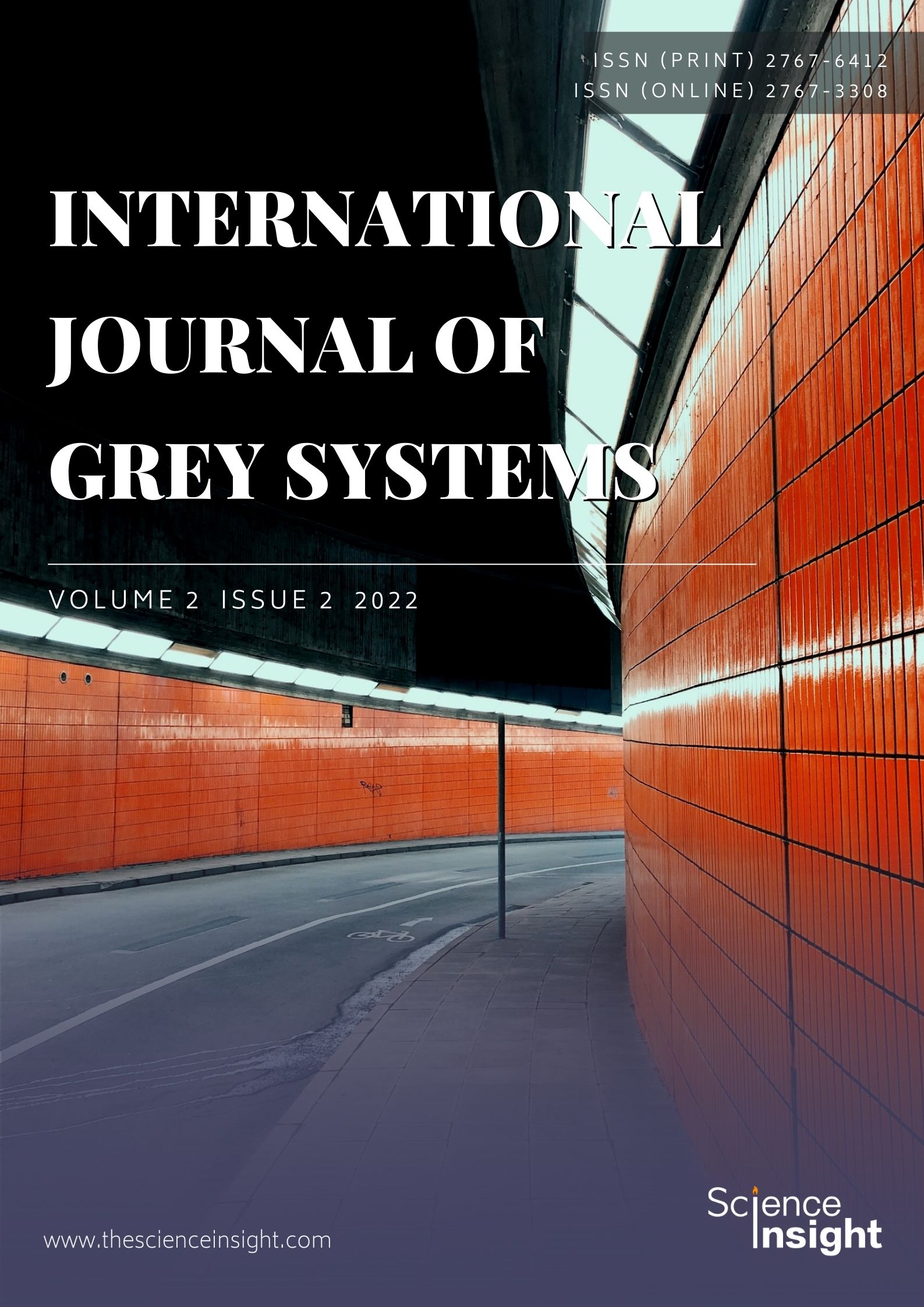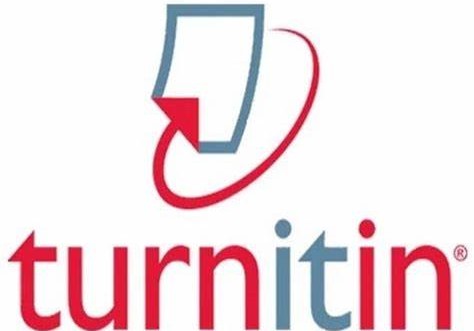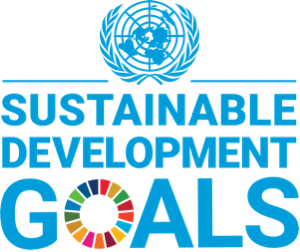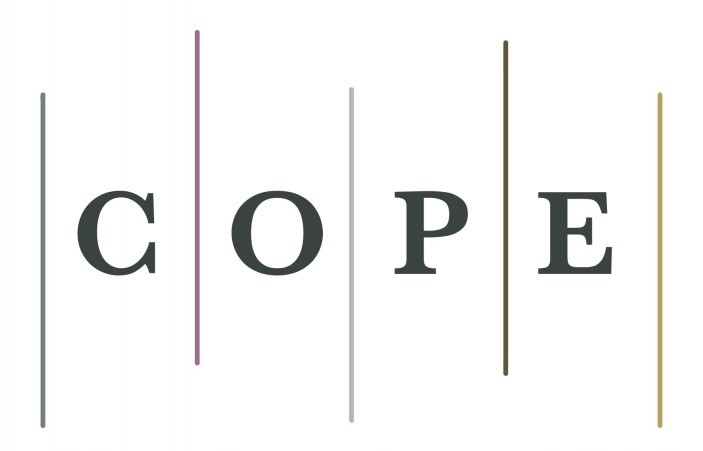Evaluation of Chinese Cloth Suppliers using Dynamic Grey Relational Analysis
DOI:
https://doi.org/10.52812/ijgs.62Keywords:
Grey Relational Analysis, Dynamic Grey Relational Analysis, Supplier Selection Problem, Apparel industry, China, Grey modelAbstract
The clothing industry is one of the world's most important and innovative industries. Furthermore, it is a major industry in developing economies such as China and India. With the global economic turmoil and environmental problems expanding, it is extremely important to choose suppliers who offer the highest level of customer satisfaction while taking environmental concerns into account. The study aims to evaluate wholesale clothing suppliers of a Chinese import/export company using the Dynamic Grey Relational Analysis (DGRA) model. The results are validated through comparative analyses with the Ordinal Priority Approach (OPA) and TOPSIS models. The results show that the DGRA is a reliable approach to supplier selection in apparel industry.
References
Abbasi, M., & Nilsson, F. (2016). Developing environmentally sustainable logistics: Exploring themes and challenges from a logistics service providers’ perspective. Transportation Research Part D: Transport and Environment, 46, 273-283. https://doi.org/10.1016/j.trd.2016.04.004
Abifarin, J. K., Obada, D. O., Dauda, E. T. & Oyedeji, E. O. (2021). Taguchi Grey Relational Optimization of the Multi-mechanical Characteristics of Kaolin Reinforced Hydroxyapatite: Effect of Fabrication Parameters. International Journal of Grey Systems, 1(2), 20-32. https://doi.org/10.52812/ijgs.30
Agyabeng-Mensah, Y., Ahenkorah, E., Afum, E., Dacosta, E., & Tian, Z. (2020). Green warehousing, logistics optimization, social values and ethics and economic performance: the role of supply chain sustainability. The International Journal of Logistics Management, 31 (3), 549-574 https://doi.org/10.1108/IJLM-10-2019-0275
Amindoust, A. (2018). Supplier selection considering sustainability measures: an application of weight restriction fuzzy-DEA approach. RAIRO-Operations Research, 52(3), 981-1001. https://doi.org/10.1051/ro/2017033
Amindoust, A., Ahmed, S., Saghafinia, A., & Bahreininejad, A. (2012). Sustainable supplier selection: A ranking model based on fuzzy inference system. Applied Soft Computing, 12(6), 1668-1677. https://doi.org/10.1016/j.asoc.2012.01.023
Azimifard, A., Moosavirad, S. H., & Ariafar, S. (2018). Selecting sustainable supplier countries for Iran's steel industry at three levels by using AHP and TOPSIS methods. Resources Policy, 57, 30-44. https://doi.org/10.1016/j.resourpol.2018.01.002
Bah, M. K., & Tulkinov, S. (2022). Evaluation of Automotive Parts Suppliers through Ordinal Priority Approach and TOPSIS. Management Science and Business Decisions, 2(1), 5-17. https://doi.org/10.52812/msbd.37
Bergek, A., Tell, F., Berggren, C., & Watson, J. (2008). Technological capabilities and late shakeouts: industrial dynamics in the advanced gas turbine industry, 1987–2002. Industrial and Corporate Change, 17(2), 335-392. https://doi.org/10.1093/icc/dtn005
Biswal, A., Singh, T., Singh, V., Ravindra, K., & Mor, S. (2020). COVID-19 lockdown and its impact on tropospheric NO2 concentrations over India using satellite-based data. Heliyon, 6(9), e04764. https://doi.org/10.1016/j.heliyon.2020.e04764
Bushuev, M. A. (2018). Delivery performance improvement in two-stage supply chain. International Journal of Production Economics, 195, 66-73. https://doi.org/10.1016/j.ijpe.2017.10.007
Cebekhulu, B., & Ozor, P. (2022). The Influence Of Quality Management And Erp Systems On Organisational Culture And Performance. Proceedings on Engineering, 4(1), 41-50. https://doi.org/10.24874/PES04.01.007
Chan, F. T., & Chan, H. K. (2010). An AHP model for selection of suppliers in the fast changing fashion market. The International Journal of Advanced Manufacturing Technology, 51(9), 1195-1207. https://doi.org/10.1007/s00170-010-2683-6
Chen, Y. J. (2011). Structured methodology for supplier selection and evaluation in a supply chain. Information Sciences, 181(9), 1651-1670. https://doi.org/10.1016/j.ins.2010.07.026
Darnall, N., Jolley, G. J., & Handfield, R. (2008). Environmental management systems and green supply chain management: complements for sustainability?. Business Strategy and the Environment, 17(1), 30-45. https://doi.org/10.1002/bse.557
Dashoush, D. (2021). Supply Chain Challenges: Effects on the Fashion Industry. Doaa Dashoush. https://doaadashoush.com/supply-chain-challenges-effects-on-the-fashion-industry/
Davis-Sramek, B., Robinson, J. L., Darby, J. L., & Thomas, R. W. (2020). Exploring the differential roles of environmental and social sustainability in carrier selection decisions. International Journal of Production Economics, 227, 107660. https://doi.org/10.1016/j.ijpe.2020.107660
De Almeida Guerra, R. M., & Camargo, M. E. (2016). The Role of Technological Capability in the Internationalization of the Company and New Product Success. Revista Eletrônica de Negócios Internacionais (Internext), 11(1), 49-62. https://doi.org/10.18568/1980-4865.11149-62
Dheeraj, N., & Vishal, N. (1992). An overview of green supply chain management in India. Research Journal of Recent Sciences. http://www.isca.in/rjrs/archive/v1/i6/14.ISCA-RJRS-2012-130%20Done.php
Efobi U, Belmondo T, Orkoh E, et al. Environmental pollution policy of small businesses in Nigeria and Ghana: extent and impact. Environmental Science and Pollution Research, 26(3), 2882-2897. https://doi.org/10.1007/s11356-018-3817-x
Ercan, T. (2019). Building the Link between Technological Capacity Strategies and Innovation in Construction Companies. In Sustainable Management Practices. IntechOpen. http://dx.doi.org/10.5772/intechopen.88238
Estampe, D., Lamouri, S., Paris, J.-L., and Brahim-Djelloul, S. (2013). A framework for analyzing supply chain performance evaluation models. International Journal of Production Economics, 142(2), 247-258. https://doi.org/10.1016/j.ijpe.2010.11.024
García, F., Avella, L., & Fernández, E. (2012). Learning from exporting: The moderating effect of technological capabilities. International Business Review, 21(6), 1099-1111. https://doi.org/10.1016/j.ibusrev.2011.12.001
Gonzalez, M. E., Quesada, G., & Monge, C. A. M. (2004). Determining the importance of the supplier selection process in manufacturing: a case study. International Journal of Physical Distribution & Logistics Management. https://doi.org/10.1108/09600030410548550
Govindan, K., Jha, P. C., Agarwal, V., & Darbari, J. D. (2019). Environmental management partner selection for reverse supply chain collaboration: A sustainable approach. Journal of environmental management, 236, 784-797. https://doi.org/10.1016/j.jenvman.2018.11.088
Gurel, O., Acar, A. Z., Onden, I., & Gumus, I. (2015). Determinants of the green supplier selection. Procedia-Social and Behavioral Sciences, 181, 131-139. https://doi.org/10.1016/j.sbspro.2015.04.874
Handfield, R., Walton, S. V., Sroufe, R., & Melnyk, S. A. (2002). Applying environmental criteria to supplier assessment: A study in the application of the Analytical Hierarchy Process. European journal of operational research, 141(1), 70-87. https://doi.org/10.1016/S0377-2217(01)00261-2
Hwang, C.-L., & Yoon, K. (1981). Multiple Attribute Decision Making Methods and Applications: A State-of-the-Art Survey. New York: Springer.
Ivanova, M. (2022). Evaluation of Risks to the Russian Food Supply Chains during the COVID-19. Management Science and Business Decisions, 2(1), 40–47. https://doi.org/10.52812/msbd.42
Javed, S. A., Gunasekaran, A., & Mahmoudi, A. (2022). DGRA: Multi-sourcing and supplier classification through Dynamic Grey Relational Analysis method. Computers & Industrial Engineering, 173, 108674. https://doi.org/10.1016/j.cie.2022.108674
Jia, P., Govindan, K., Choi, T. M., & Rajendran, S. (2015). Supplier selection problems in fashion business operations with sustainability considerations. Sustainability, 7(2), 1603-1619. https://doi.org/10.3390/su7021603
Kharipzhanova, A., & Irfan, M. (2022). Evaluation of Barriers to Gilgit Baltistan’s Travel & Tourism Industry: Pakistani Youth’s Perception. Management Science and Business Decisions, 2(1), 31–39. https://doi.org/10.52812/msbd.39
Kim, J., & Rhee, J. (2012). An empirical study on the impact of critical success factors on the balanced scorecard performance in Korean green supply chain management enterprises. International Journal of Production Research, 50(9), 2465-2483. https://doi.org/10.1080/00207543.2011.581009
Koprulu, A., & Albayrakoglu, M. M. (2007, August). Supply chain management in the textile industry: a supplier selection model with the analytical hierarchy process. In Proceeding of the International Symposium on the Analytic Hierarchy Process (pp. 3-6).
Lee, A. H., Kang, H. Y., Hsu, C. F., & Hung, H. C. (2009). A green supplier selection model for high-tech industry. Expert systems with applications, 36(4), 7917-7927. https://doi.org/10.1016/j.eswa.2008.11.052
Mahmoudi, A., Deng, X., Javed, S. A., & Zhang, N. (2021). Sustainable supplier selection in megaprojects: grey ordinal priority approach. Business Strategy and the Environment, 30(1), 318-339. https://doi.org/10.1002/bse.2623
Marufuzzaman, M., Ahsan, K. B., & Xing, K. (2009). Supplier selection and evaluation method using Analytical Hierarchy Process (AHP): a case study on an apparel manufacturing organisation. International journal of value chain management, 3(2), 224-240. DOI:10.1504/IJVCM.2009.026958
Melnyk, S. A., Narasimhan, R., & DeCampos, H. A. (2014). Supply chain design: issues, challenges, frameworks and solutions. International Journal of Production Research, 52(7), 1887-1896. https://doi.org/10.1080/00207543.2013.787175
Mondragon, A. E. C., Mastrocinque, E., Tsai, J. F., & Hogg, P. J. (2019). An AHP and fuzzy AHP multifactor decision making approach for technology and supplier selection in the high-functionality textile industry. IEEE Transactions on Engineering Management, 68(4), 1112-1125. 10.1109/TEM.2019.2923286
Nakiboglu, G., & Bulgurcu, B. (2021). Supplier selection in a Turkish textile company by using intuitionistic fuzzy decision-making. The Journal of the Textile Institute, 112(2), 322-332. https://doi.org/10.1080/00405000.2020.1747675
Noci, G. (1997). Designing green’ vendor rating systems for the assessment of a supplier's environmental performance. European Journal of Purchasing & Supply Management, 3(2), 103-114. https://doi.org/10.1016/S0969-7012(96)00021-4
Ohno, T. (2019). Toyota production system: beyond large-scale production. Productivity press. https://doi.org/10.4324/9780429273018
Oyedeji, E. O., Dauda, M., Yaro, S. A., & Abdulwahab, M. (2022). Mechanical Properties Optimization and Modeling of Palm Kernel Shell Ash Reinforced Al-Mg-Si Composite using Grey Relational Analysis. International Journal of Grey Systems, 2(1), 27-37. https://doi.org/10.52812/ijgs.44
Rabbani, M., Foroozesh, N., Mousavi, S. M., & Farrokhi-Asl, H. (2019). Sustainable supplier selection by a new decision model based on interval-valued fuzzy sets and possibilistic statistical reference point systems under uncertainty. International Journal of Systems Science: Operations & Logistics, 6(2), 162-178. https://doi.org/10.1080/23302674.2017.1376232
Reed, F. M., & Walsh, K. (2002). Enhancing technological capability through supplier development: a study of the UK aerospace industry. IEEE Transactions on Engineering Management, 49(3), 231-242. 10.1109/TEM.2002.803379
Rostamzadeh, R., Govindan, K., Esmaeili, A., & Sabaghi, M. (2015). Application of fuzzy VIKOR for evaluation of green supply chain management practices. Ecological Indicators, 49, 188-203. https://doi.org/10.1016/j.ecolind.2014.09.045
Salameh, M. K., & Jaber, M. Y. (2000). Economic production quantity model for items with imperfect quality. International Journal of Production Economics, 64(1-3), 59-64. https://doi.org/10.1016/S0925-5273(99)00044-4
Salimifard, K., Shahbandarzadeh, H., & Raeesi, R. (2012, February). Green transportation and the role of operation research. In Int. Conf. Traffic Transp. Eng. (ICTTE 2012) (Vol. 26, pp. 74-79). IACSIT Press.
Salisu, Y., & Bakar, L. J. A. (2019). Technological capability, relational capability and firms’ performance: The role of learning capability. Revista de Gestão. https://doi.org/10.1108/REGE-03-2019-0040
Santos-Vijande, M. L., López-Sánchez, J. Á., & Trespalacios, J. A. (2012). How organizational learning
affects a firm’s flexibility, competitive strategy, and performance. Journal of Business Research,
(8), 1079–1089. https://doi.org/10.1016/j.jbusres.2011.09.002
Sarkar, B. (2019). Mathematical and analytical approach for the management of defective items in a multi-stage production system. Journal of Cleaner Production, 218, 896-919. https://doi.org/10.1016/j.jclepro.2019.01.078
Sasi, J. C., & Digalwar, A. K. (2015). Application of AHP and TOPSIS method for supplier selection between India & China in textile industry. International Research Journal of Engineering and Technology, 2(4), 1730-1738.
Simpson, P. M., Siguaw, J. A., & White, S. C. (2002). Measuring the performance of suppliers: an analysis of evaluation processes. Journal of Supply Chain Management, 38(4), 29-41. https://doi.org/10.1111/j.1745-493X.2002.tb00118.x
Sivrikaya, B. T., Kaya, A., Dursun, M., & Çebi, F. (2015). Fuzzy AHP–goal programming approach for a supplier selection problem. Research in Logistics & Production, 5(3), 271-285.
Song, M., Nason, R. W., & Di Benedetto, C. A. (2008). Distinctive marketing and information technology capabilities and strategic types: A cross-national investigation. Journal of International Marketing, 16(1), 4-38. https://doi.org/10.1509/jimk.16.1.4
Srivastava, S. K. (2007). Green supply‐chain management: a state‐of‐the‐art literature review. International Journal of Management Reviews, 9(1), 53-80. https://doi.org/10.1111/j.1468-2370.2007.00202.x
Stillwell, W. G., Seaver, D. A., & Edwards, W. (1981). A comparison of weight approximation techniques in multiattribute utility decision-making. Organizational Behavior and Human Performance, 28(1), 62-77. https://doi.org/10.1016/0030-5073(81)90015-5
Torabizadeh, M., Yusof, N. M., Ma’aram, A., & Shaharoun, A. M. (2020). Identifying sustainable warehouse management system indicators and proposing new weighting method. Journal of Cleaner Production, 248, 119190. https://doi.org/10.1016/j.jclepro.2019.119190
Tsai, K. H. (2004). The impact of technological capability on firm performance in Taiwan's electronics industry. The Journal of High Technology Management Research, 15(2), 183-195. https://doi.org/10.1016/j.hitech.2004.03.002
Tsoy, K. (2022). Nord Stream 2: The Expectations of Russian Citizens from Increasing Gas Exports to Europe. Management Science and Business Decisions, 2(1), 48–60. https://doi.org/10.52812/msbd.38
Ulutaş, A., Topal, A., & Bakhat, R. (2019). An application of fuzzy integrated model in green supplier selection. Mathematical Problems in Engineering, 2019. https://doi.org/10.1155/2019/4256359
Vachon, S., & Klassen, R. D. (2008). Environmental management and manufacturing performance: The role of collaboration in the supply chain. International Journal of Production Economics, 111(2), 299-315. https://doi.org/10.1016/j.ijpe.2006.11.030
Wahab, M. I. M., & Jaber, M. Y. (2010). Economic order quantity model for items with imperfect quality, different holding costs, and learning effects: A note. Computers & Industrial Engineering, 58(1), 186-190. https://doi.org/10.1016/j.cie.2009.07.007
Wang, C. N., Pham, T. D. T., & Nhieu, N. L. (2021). Multi-layer fuzzy sustainable decision approach for outsourcing manufacturer selection in apparel and textile supply chain. Axioms, 10(4), 262. https://doi.org/10.3390/axioms10040262
Wang, C. N., Yang, C. Y., & Cheng, H. C. (2019). A fuzzy multicriteria decision-making (MCDM) model for sustainable supplier evaluation and selection based on triple bottom line approaches in the garment industry. Processes, 7(7), 400. https://doi.org/10.3390/pr7070400
Wang, Y., Lo, H. P., Zhang, Q., & Xue, Y. (2006). How technological capability influences business performance: An integrated framework based on the contingency approach. Journal of Technology Management in China. https://doi.org/10.1108/17468770610642740
Wang, Z., Subramanian, N., Gunasekaran, A., Abdulrahman, M. D., & Liu, C. (2015). Composite sustainable manufacturing practice and performance framework: Chinese auto-parts suppliers׳ perspective. International Journal of Production Economics, 170, 219-233. https://doi.org/10.1016/j.ijpe.2015.09.035
WCED. (1987). Our common future. World commission on environment and development. https://digitallibrary.un.org/record/139811
Yang, M. F., Kuo, J. Y., Chen, W. H., & Lin, Y. (2015). Integrated supply chain cooperative inventory model with payment period being dependent on purchasing price under defective rate condition. Mathematical Problems in Engineering, 2015. https://doi.org/10.1155/2015/513435
Zhu, Q., & Sarkis, J. (2006). An inter-sectoral comparison of green supply chain management in China: drivers and practices. Journal of Cleaner Production, 14(5), 472-486. https://doi.org/10.1016/j.jclepro.2005.01.003
.

Downloads
Published
How to Cite
Issue
Section
License
Copyright (c) 2022 Science Insight

This work is licensed under a Creative Commons Attribution-NonCommercial 4.0 International License.
Creative Commons Non Commercial CC BY-NC: The work is distributed under the terms of the Creative Commons Attribution-NonCommercial 4.0 License which permits non-commercial use, reproduction and distribution of the work without further permission provided the original work is properly attributed.








